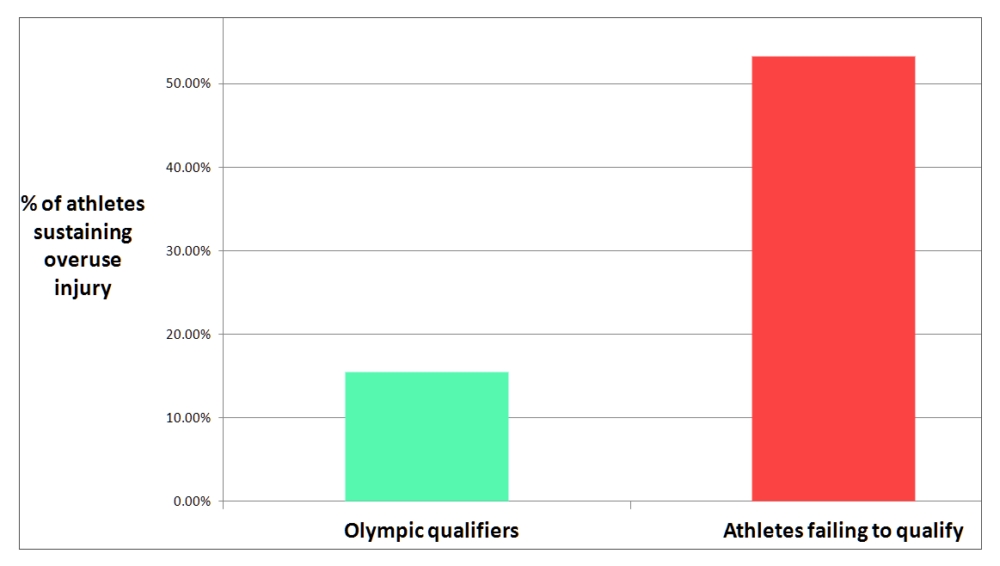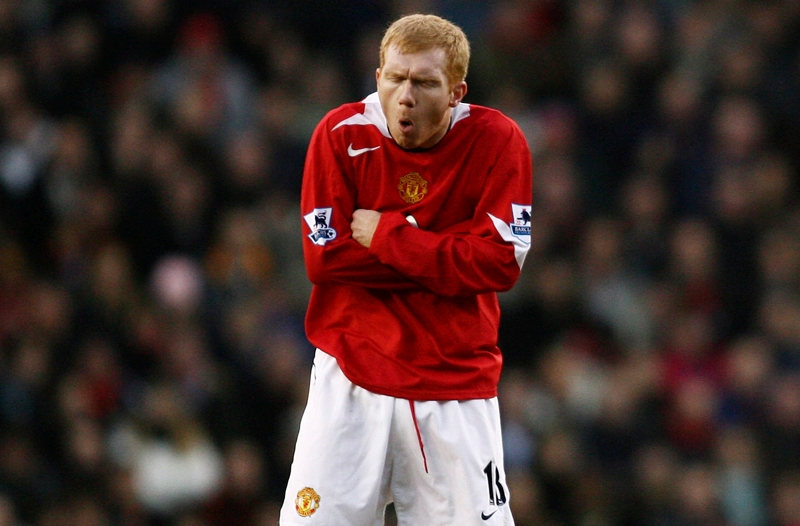You are viewing 1 of your 1 free articles. For unlimited access take a risk-free trial
Healthier training, better training

Andrew Sheaf explains why athletes seeking to improve their training programs and performance should make their overall health status a key priority in any training plan
With the approaching New Year, many athletes will be reflecting upon what’s they’ve done this year, and considering how to approach the new sporting season. If 2021 was a fantastic year athletically, that positive reinforcement often has athletes confident and motivated to take their performances to the next level. But by the same token, if 2021 was a year of frustration, the New Year can seem like a fresh start and a new opportunity, serving to heighten motivation and ambition.In both cases, the instinct is to up the training load and work harder to accomplish big goals. However, while a strong work ethic is critical to accomplishing your goals, it can actually work against already motivated athletes. Counter-intuitively, ‘stepping up’ your training may actually move you further from your goals, particularly if you undertake more than you handle. It can leave you overworked, or even injured - two outcomes that are certainly NOT conducive to better performance! As we’ll see, injury may be the single greatest detriment to performance there is. If that’s the case, then staying healthy is probably the number one performance enhancing tool you have.
Complete your planned training
While this concept may mesh with your experience and resonate with you intuitively, let’s take a look at what the actual research says to reinforce our perceptions by considering two key studies on this topic. In the first study, researchers conducted a prospective study with 33 track and field athletes competing at international level over a 5-year period(1). They kept track of the number of planned training weeks completed, how often the subjects were injured or ill, and whether they accomplished their season-ending goals in major competitions. The goal of the study was to determine if there was a relationship between completing planned training weeks and accomplishing season-ending goals.It turned out that completing more than 80% of the planned training weeks made it seven times more likely that an athlete would accomplish their season ending goals. This study provides a clear indication that simply completing planned training is critical to achieving your goals. It follows therefore that staying healthy – so your planned training can be completed - should be a priority if not the priority in your training. Indeed, simply completing planned training seems more important than performing specific volumes or intensities. What’s encouraging is that you don’t have to be perfect, you just have to be good. Completing 80% of what you have planned is all it takes!
Why injury matters
In the next study, these same researchers reviewed all of the current literature regarding the prevalence of injury and the rates of competitive success in both team and individual sports(2). Ultimately, 14 studies were included in their systematic review, and the researchers concluded that healthy athletes are critical for success in individual and team sports. The more available athletes are to train and compete, the more likely success is. By contrast however, the higher the prevalence of injury in the precompetitive and competitive phases, the greater the likelihood of competitive failure. The authors also highlighted that this phenomenon can be true of individual competitions as well as entire seasons, meaning it’s not just one competition that could be at risk.Finally, in a prospective study of Japanese swimmers aiming to compete in the 2016 Olympic Games, 64 swimmers, all of whom had achieved top 32 world rankings, were orthopedically evaluated to assess their current injury status(3). This process occurred four months prior to Olympic qualification. Following Olympic qualification, the orthopedic assessments were analyzed, comparing those individuals who qualified for the Olympics and those that did not. It turns out that the prevalence of overuse injuries was 53.3% in the female non-Olympic qualifiers compared to female 15.4% in the Olympians (see figure 1). In other words, the Olympians had less than one third of the injury rate! Simply staying healthy creates a distinct performance advantage, even at the highest level of sport.
Figure 1: Prevalence of overuse injuries in Olympic qualifiers vs. non-qualifiers

Keys to success
While it may come as a surprise in regards to the power of the effect, one of the most important factors for long-term performance improvement is your physical health. If you can stay healthy and complete the vast majority of your training sessions, you’re much more likely to accomplish your goals. Likewise, if you can avoid chronic overuse injuries, you’ll stand a better chance of success. Assuming you’re convinced that simply staying healthy is the key to better performance in 2022 and beyond, the next logical question is ‘what’s the best way to stay to healthy while training hard?’ Fortunately, there are clues in the research that point to answers to this question as well:- Manage your training load - More than any other factor, effectively managing your training load is key to reducing the risk of injury. This is especially true in the initial stages of a training program, as this is when most injuries occurred in the Australia track athletes study mentioned earlier(1). However, regardless of the phase of training, large increases in training load can also increase the risk of injury(4). Even if there is no abrupt increase in training load, it is during the highest volume periods that injuries are most likely to occur(5). Therefore, while it’s tempting to turn up the heat when training is going well, it’s often better to play it safe to ensure you stay healthy.
- Sleep - While it’s well understood that focusing on sleep can enhance performance and overall health, it’s less appreciated that better recovery can reduce the likelihood of injury. A study from earlier this year demonstrated that low sleep duration was associated with increased injury risk, and poor measures of other sleep variables was related to increased risk of illness(6). Prioritizing sleep can reduce the risk of picking up an injury or illness, both of which have the potential to derail your competitive plans.
- Take niggles seriously - A recent investigation into soccer players looked into whether small complaints that did not involve time loss were related to injuries that resulted in time loss(7). It was found that the presence of ‘niggles’ led to a 3.6 to 6.9 times greater likelihood of a significant injury that resulted in time loss. What’s interesting is that 28% of players reported niggles, indicating that many individuals were at greater risk of injury. While it may seem that injuries come out of nowhere, there are often warning signs along the way that we choose to ignore. The message is clear- don’t ignore the warning signs!
In summary
The key to better performances in 2022 may not be the latest training techniques or technological gadgets. It’s probably a lot simpler than that. Something as simple as staying healthy may be one of the most important outcomes you can achieve in terms of facilitating better performance in your sport of choice. Of course, simple isn’t easy. It takes discipline in being cautious with your training plan, backing off at any signs of trouble, and making recovery a priority. However, the benefits are significant as staying healthy is clearly a key to improved performance!References
- J Sci Med Sport. 2016 Oct;19(10):778-83
- Br J Sports Med. 2017 Aug;51(16):1209-1214
- Phys Ther Sport. 2020 Jul;44:128-135
- Int J Sports Physiol Perform. 2019 May 1;14(5):590-597
- Inj Epidemiol. 2020 May 4;7(1):16
- Scand J Med Sci Sports. 2021 Mar;31(3):691-701
- Sci Med Football. 2020 4(3): 216-224
Related Files
Newsletter Sign Up
Testimonials
Dr. Alexandra Fandetti-Robin, Back & Body Chiropractic
Elspeth Cowell MSCh DpodM SRCh HCPC reg
William Hunter, Nuffield Health
Newsletter Sign Up
Coaches Testimonials
Dr. Alexandra Fandetti-Robin, Back & Body Chiropractic
Elspeth Cowell MSCh DpodM SRCh HCPC reg
William Hunter, Nuffield Health
Keep up with latest sports science research and apply it to maximize performance
Today you have the chance to join a group of athletes, and sports coaches/trainers who all have something special in common...
They use the latest research to improve performance for themselves and their clients - both athletes and sports teams - with help from global specialists in the fields of sports science, sports medicine and sports psychology.
They do this by reading Sports Performance Bulletin, an easy-to-digest but serious-minded journal dedicated to high performance sports. SPB offers a wealth of information and insight into the latest research, in an easily-accessible and understood format, along with a wealth of practical recommendations.
*includes 3 coaching manuals
Get Inspired
All the latest techniques and approaches
Sports Performance Bulletin helps dedicated endurance athletes improve their performance. Sense-checking the latest sports science research, and sourcing evidence and case studies to support findings, Sports Performance Bulletin turns proven insights into easily digestible practical advice. Supporting athletes, coaches and professionals who wish to ensure their guidance and programmes are kept right up to date and based on credible science.











